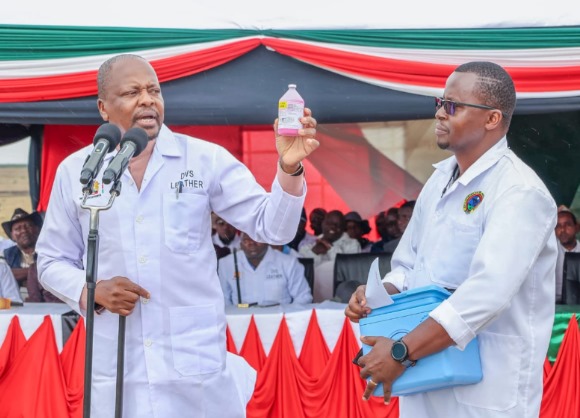As the nationwide livestock vaccination programme continues, farmers in Kiambu have expressed mixed reactions to the government’s efforts to curb Foot and Mouth Disease (FMD).
The vaccination drive, targeting 22 million livestock, aims to protect animals from FMD, a highly contagious viral disease that affects cattle, goats, and sheep.
The disease causes fever, blisters, and sores, leading to reduced milk production, weight loss, and, in severe cases, death. Economic losses due to trade restrictions on affected livestock have also been a major concern.
Some farmers have embraced the initiative, viewing it as a cost-saving and protective measure. “The government’s support saves us money and protects our source of income,” said Mary Wairimu, a Kiambu-based farmer.
However, others remain sceptical. “I don’t see the need for this vaccine…” said John Kamau, a local livestock owner.
Veterinary officers warn that resistance to vaccination could have long-term consequences. “Healthy animals mean better productivity and higher profits, leading to immense economic and food security benefits. On the other hand, FMD leads to reduced milk yields, infertility, and the potential culling of entire herds to prevent outbreaks,” said Dr. Francis Kimani, Veterinary doctor, Murang’a County.
The three-year voluntary vaccination programme is being conducted biannually across the country. Agriculture Cabinet Secretary Mutahi Kagwe previously stated that FMD and Peste des Petits Ruminants (PPR) contributed to an estimated Sh62 billion in annual losses.
However, the success of the vaccination programme will depend on continued awareness and participation.
The government aims to achieve disease-free status from the World Organisation for Animal Health (WOAH), which would improve Kenya’s access to international livestock markets.
By Yvonne Wangeci





